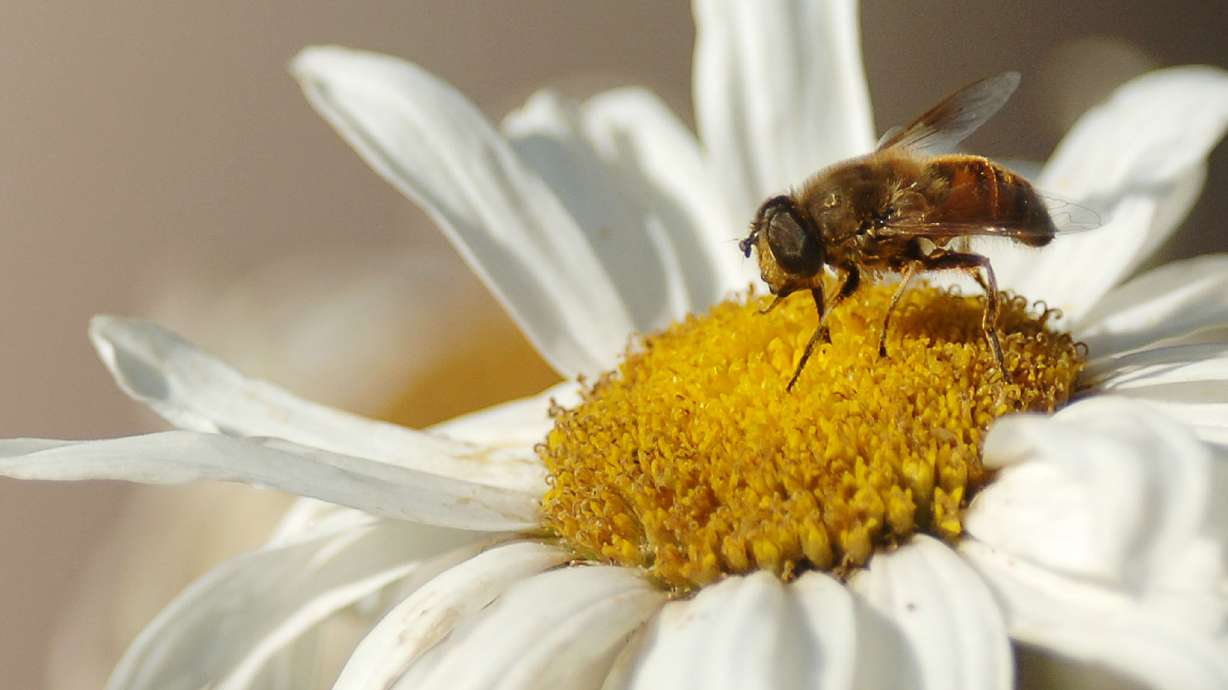Estimated read time: 6-7 minutes
This archived news story is available only for your personal, non-commercial use. Information in the story may be outdated or superseded by additional information. Reading or replaying the story in its archived form does not constitute a republication of the story.
SALT LAKE CITY — William Anderegg's interest in pollen comes partly from the fact that he — like many Americans — suffers from allergies when trees and plants begin to produce pollen in the spring.
He's also read plenty of small plants studies that suggest increased temperatures and carbon dioxide levels could lead to more pollen. So, he set out to find if all the concerns over climate change and warming global temperatures have any impact whatsoever when it comes to annual allergy seasons.
The findings? Pollen seasons are beginning sooner and getting longer, overall.
A new study led by Anderegg found that pollen seasons began nearly three full weeks earlier in recent decades with more pollen produced. In addition, it blames climate change as a primary culprit for at least increased season length. That's bad news for anyone like Anderegg who suffers from pollen-related allergies and illnesses.
"I think this is really a crystal-clear example of how climate change affects our health," Anderegg, an assistant professor at the University of Utah's School of Biological Sciences, told KSL.com.
"In the near term — particularly the next decade or two — this very likely indicates we are in for longer and more severe pollen seasons," he later added. "There's a lot of, kind of, local and regional actions we can try to take to minimize the vulnerability and really adapt to these pollen seasons, but this does empathize that really trying to tackle and reign in climate will have pretty substantial benefits to our health."
The research paper, published Monday in the Proceedings of the National Academy of Sciences, found a continual rise in pollen after analyzing data from 60 stations across the United States and Canada. The data was collected by the National Allergy Bureau beginning in 1990 and ending in 2018, and those stations are where airborne pollen and mold samples are collected.
Anderegg explained that it took years for data to be collected at the various sites for any researcher to find any long-term patterns. Once the data was there, the research team used statistical models to look for patterns over the span of 28 years.
"We found quite strong trends. In particular, the pollen seasons are starting about 20 days earlier than they were in the 1990s, and they go about 10 days longer overall," Anderegg said.
Overall pollen counts also increased 21% by 2018 compared to figures reported in the 1990s. That means pollen seasons have grown more intense in recent years in addition to beginning sooner and lasting longer.
The research team then went to work to figure out what might cause the shift in pollen data. They used computer models that merged pollen data with climate data in scenarios with and without warming global temperatures.
"The difference between those two tells you how much a role human-caused climate change is playing in pollen seasons," Anderegg said. "The main finding there is that climate change was far and away the dominant factor for pollen season length."
The team found that climate change was responsible for 50% to 65% of changes to pollen season time frame changes. It had a lesser role in pollen severity, but still about 8% of the pollen increase was attributed to climate change.
Researchers said the data showed that a change in climate caused disruptions in trees and plants' phenology, or internal timing. They found that plants began to produce pollen earlier in the year as a result of warming temperatures in winter and early spring seasons. The data also showed more growth in the length of seasons since 2003 compared to the years from 1990 through 2003.
Given the previous research on pollen and climate change's impact on both fauna and flora, Anderegg wasn't at all shocked by the findings on an overall scale. The study tacked on new knowledge about the length in pollen seasons and the role climate change has factored into it.
The biggest surprise for him may have been the trends within the overall scale. Before the study began, researchers expected to find that northern states would be most-impacted by changing climates; however, they found the greatest increases were centered around Texas and the American Southeast and around the Midwest.
In addition, they found tree pollen growth rates were larger than other plants. Researchers believe there's a possibility that some plants located in those regions are more adversely affected by changes to the climate than trees and plants in the North and the West.
"This is likely a fact that some of these plant species that are really important for the pollen season in the South and the Midwest might be particularly sensitive rather than areas that are most sensitive to climate change," Anderegg said.
He added that it's still unclear what the future of pollen will look like beyond the next couple of decades because it is possible that more frequent and severe droughts associated with climate change could eventually lessen pollen counts in some regions. That possibility would lead to completely different plant concerns.
Meanwhile, researchers say the findings show a less-studied impact of climate change. Anderegg pointed out that scientists know that pollen can exacerbate allergies and asthma, which can lead to hospitalizations. At the same time, those with allergies pay for medications that help lessen the impacts of pollen.
Some studies have shown links to pollen concentration to how well children perform in school. There's also been a tie to respiratory issues caused by pollen allergies and an increased vulnerability to virus; Anderegg pointed out that study was conducted just before COVID-19 impacted the world.
"All of these are to say that climate change is already here and already having health impacts, and this pollen one is a really clear example that every spring we are kind of breathing in some of the early impacts of climate change," he said.
The research team was composed of researchers at universities in Utah, California, New Jersey and Massachusetts.
Anderegg said the team would likely need to conduct more research to figure out why certain regions or plants are impacted more than others. The team would also like to expand research into other global regions in the future. They also hope their work could lead to an expansion of new data sites in the U.S. to better understand pollen trends within North America.
For instance, the only site in Utah is located in Draper and doesn't account for possible trends in northern or southern Utah. At the same time, there are hundreds of stations in the state that look into other air quality concerns like ozone and particulate matter.
"I think there's a huge need for increased monitoring and measuring of pollen," Anderegg said. "I think there's a big need to really collect a lot more data to figure out where are the trends, what species are responding, and what are they responding to?"










